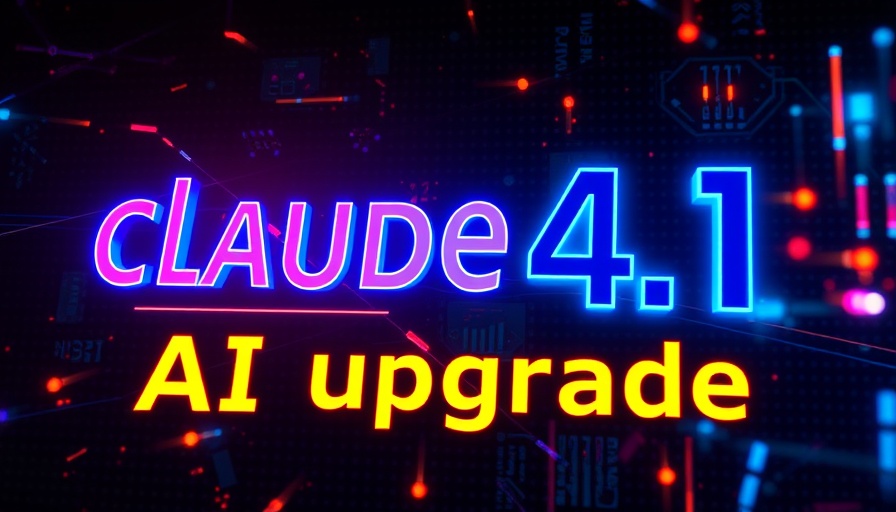
The Latest from Claude Opus 4.1: Not Just Another Upgrade
In the rapidly evolving landscape of artificial intelligence, staying ahead means making strategic moves, and yesterday, Enthropic did just that by releasing Claude Opus 4.1. While it may not have been as groundbreaking as some expected, it offers valuable enhancements in hybrid reasoning and real-world coding capabilities that are particularly beneficial for developers. Its 200K context window allows for improved handling of expansive coding projects, a significant plus as teams work on larger codebases.
In 'Claude Opus 4.1 + HUGE Claude Code Upgrade! BEST AI Coding LLM Ever! Powerful But Expensive!', the discussion dives into the implications of the latest updates to AI tools, exploring key insights that sparked deeper analysis on our end.
Why Developers Should Care About Opus 4.1
This upgrade may only represent a modest performance improvement of approximately 2% on the Swaybench benchmark, but in the coding world, every percentage point counts. Enhanced accuracy and reduced bugs can make all the difference in software development. For development teams relying on coherent multi-step reasoning and agentic workflows, Claude Opus 4.1 emerges as a robust tool in their arsenal. The ease with which it can integrate into current development workflows cannot be overstated.
The Cost of Innovation: Is It Worth It?
Despite being a powerful model, the pricing remains a sticking point, with costs set at $15 and $75 per million tokens for inputs and outputs, respectively. This raises a critical question for developers: is the investment justified? While larger teams managing extensive codes might find value in the upgrades, smaller developers may need to weigh their options against open-source alternatives like Kimik K2. With many innovative and cost-effective AI solutions emerging, potential users must carefully consider their needs.
AI’s Growing Influence in Development
The advancements with Claude Opus 4.1 reflect a broader trend of how AI is transforming software development. From generating playful applications like pool games to complex interfaces for web desktops, the capacity for nuanced coding demonstrates AI's potential to reshape industries. Additionally, with integrated security review tools, developers can leverage AI not only for creation but also for safeguarding against vulnerabilities, a crucial aspect as digital security remains a top priority.
Future Outlook and the Expanding Role of AI
Looking ahead, Enthropic hints at larger upgrades on the horizon, hinting at a vibrant future for their models. As AI continues to evolve, the demand for reliable tools that can understand and interpret complex coding tasks will only grow stronger. The interplay between innovative AI models and human developers will determine how effectively industries can harness the power of artificial intelligence.
In summary, while Claude Opus 4.1 may not be a revolutionary leap, it represents a thoughtful step towards more capable AI tools for developers. By considering the insights shared, developers can make informed choices regarding the platforms they adopt in this competitive and ever-evolving landscape.
 Add Row
Add Row  Add
Add 




Write A Comment